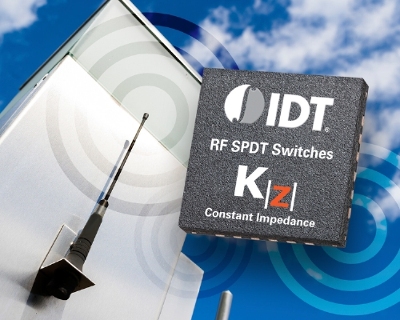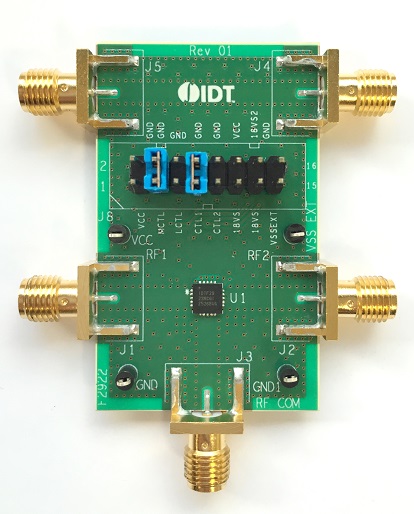IDT’s F2923 Provides Constant Impedance on All Ports During Switching Transitions without Compromising Isolation, Linearity or Insertion Loss
Integrated Device Technology (IDT) introduced the industry’s first single-pole, double-throw (SPDT) RF switch featuring its patent-pending K|Z| constant impedance technology. The IDT F2923 is a low insertion loss SPDT absorptive RF switch designed for a multitude of RF applications, including base stations (2G, 3G, 4G, 5G), wireless backhaul, CATV, and portable handhelds.

The K|Z| feature controls all port impedances when switching between RF ports, preserving the return loss. Standard switches without K|Z| create a large voltage standing wave ratio (VSWR) transient when switching RF paths because the impedance of the switch is not well controlled during the switching event. A VSWR transient can degrade system performance and reduce reliability. Benefits of K|Z| in different dynamic or “hot switching” scenarios include:
- Minimizing switched Tx/Rx Synthesizer pulling and recovery time in TDD systems
- Avoiding damage and error-inducing transients when switching between two RF elements such as PAs, drivers and LNAs.
- Minimizing transient amplitude and phase error on the unswitched path(s) when switching a path of a distribution network such as a 3 dB coupler or 4 way splitter.
In addition to K|Z| technology, the device delivers:
- Insertion loss of only 0.48 dB at 2 GHz
- IIP3 greater than 66 dBm @ 2 GHz
- Industry-leading isolation of 74 dB at 2 GHz
Covering a broad frequency range from 300 kHz to 8000 MHz, IDT’s innovative K|Z| technology ensures the device delivers near-constant impedance (VSWR < 1.4:1 compared to 9:1 for standard switches) when switching from one RF port to another while not compromising isolation, linearity, or insertion loss. The F2923 uses a single positive supply voltage of 3.3 V and supports standard 1.8 V and 3.3 V control logic levels.
 |
| Evaluation Board for F2923 SPDT with Constant Impedance, K|Z|. |
Availability
The F2923 switch is sampling and comes in a 4 × 4 mm 20-TQFN package.
